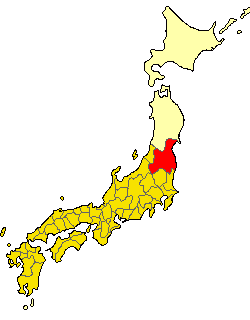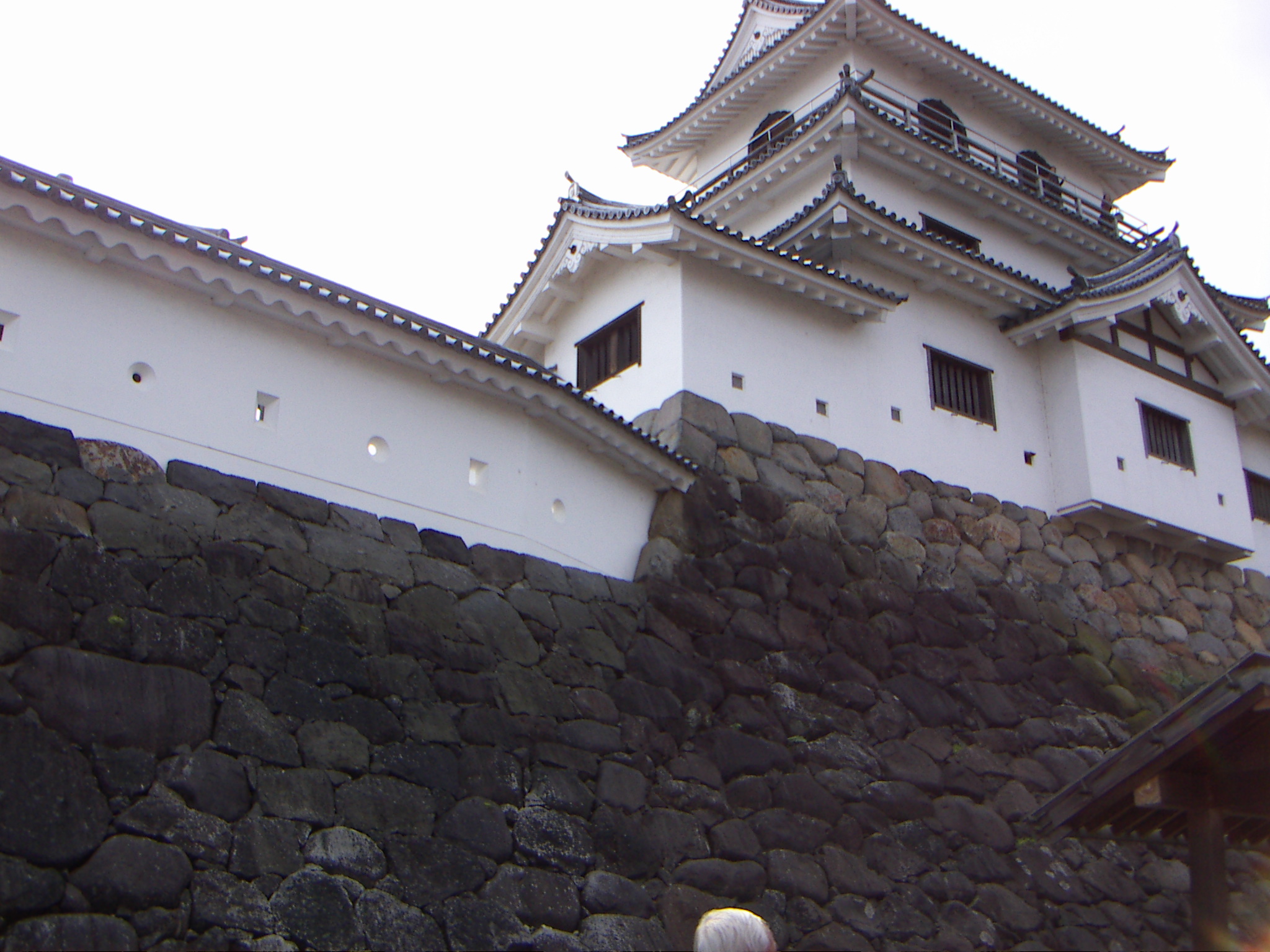|
Karita Clan
The Karita clan operated from the Katta District, south of Mutsu Province (now Miyagi Prefecture). This clan founded the Shiroishi Castle in the Heian period. The Karita clan later became the Shiroishi clan, which served the Date clan The is a Japanese samurai kin group. Papinot, Jacques Edmond Joseph. (1906). ''Dictionnaire d’histoire et de géographie du Japon''; Papinot, (2003)"Date", ''Nobiliare du Japon'', p. 5 retrieved 2013-5-5. History The Date family was founded ... References Japanese clans {{Japan-clan-stub ...[...More Info...] [...Related Items...] OR: [Wikipedia] [Google] [Baidu] |
Mutsu Province
was an old province of Japan in the area of Fukushima, Miyagi, Iwate and Aomori Prefectures and the municipalities of Kazuno and Kosaka in Akita Prefecture. Mutsu Province is also known as or . The term is often used to refer to the combined area of Mutsu and the neighboring province Dewa, which together make up the entire Tōhoku region. History Invasion by the Kinai government Mutsu, on northern Honshū, was one of the last provinces to be formed as land was taken from the indigenous Emishi, and became the largest as it expanded northward. The ancient regional capital of the Kinai government was Tagajō in present-day Miyagi Prefecture. * 709 ('' Wadō 2, 3rd month''), an uprising against governmental authority took place in Mutsu and in nearby Echigo Province. Troops were dispatched to subdue the revolt. * 712 (''Wadō 5''), Mutsu was separated from Dewa Province. Empress Genmei's ''Daijō-kan'' made cadastral changes in the provincial map of the Nara pe ... [...More Info...] [...Related Items...] OR: [Wikipedia] [Google] [Baidu] |
Katta District, Miyagi
is a district located in Miyagi Prefecture, Japan. As of 2003, the district has an estimated population of 15,266 and a population density Population density (in agriculture: Stock (other), standing stock or plant density) is a measurement of population per unit land area. It is mostly applied to humans, but sometimes to other living organisms too. It is a key geographical ... of 36.71 persons per km2. The total area is 415.85 km2. Towns and villages * Shichikashuku * Zaō Districts in Miyagi Prefecture {{Miyagi-geo-stub ... [...More Info...] [...Related Items...] OR: [Wikipedia] [Google] [Baidu] |
Miyagi Prefecture
is a prefecture of Japan located in the Tōhoku region of Honshu. Miyagi Prefecture has a population of 2,305,596 (1 June 2019) and has a geographic area of . Miyagi Prefecture borders Iwate Prefecture to the north, Akita Prefecture to the northwest, Yamagata Prefecture to the west, and Fukushima Prefecture to the south. Sendai is the capital and largest city of Miyagi Prefecture, and the largest city in the Tōhoku region, with other major cities including Ishinomaki, Ōsaki, and Tome. Miyagi Prefecture is located on Japan's eastern Pacific coast and bounded to the west by the Ōu Mountains, the longest mountain range in Japan, with 24% of its total land area being designated as Natural Parks. Miyagi Prefecture is home to Matsushima Islands, a group of islands ranked as one of the Three Views of Japan, near the town of Matsushima. On 7 April, 2011 the biggest earthquake in Japan occurred. History Miyagi Prefecture was formerly part of the province of Mutsu. 20 ... [...More Info...] [...Related Items...] OR: [Wikipedia] [Google] [Baidu] |
Shiroishi Castle
is a flatland-style Japanese castle in what is now the city of Shiroishi, Miyagi. During the Edo period, it was the castle of the Katakura clan, who were hereditary retainers of the Date clan of Sendai Domain. During the Boshin War, it was also temporarily the headquarters of the Ōuetsu Reppan Dōmei. The castle was also known by the name of Early history Shiroishi Castle was founded in the Kamakura period, by the Karita clan. Sengoku Era In 1591, during the late Azuchi–Momoyama period, the castle was completely rebuilt by the Gamō clan with stone walls and a donjon, and ruled by the senior retainer Gamō Satonari. Edo Era Beginning in 1600, the castle and its environs were recovered by the Date clan as part of Sendai Domain under the Tokugawa shogunate. From 1600 onward, Shiroishi Castle was ruled by the Katakura clan, who were retainers of the Date. It was also one of the few exceptions to the Tokugawa shogunate's rule of one castle per domain. The castle burned down i ... [...More Info...] [...Related Items...] OR: [Wikipedia] [Google] [Baidu] |
Heian Period
The is the last division of classical Japanese history, running from 794 to 1185. It followed the Nara period, beginning when the 50th emperor, Emperor Kanmu, moved the capital of Japan to Heian-kyō (modern Kyoto). means "peace" in Japanese. It is a period in Japanese history when the Chinese influences were in decline and the national culture matured. The Heian period is also considered the peak of the Japanese imperial court and noted for its art, especially poetry and literature. Two types of Japanese script emerged, including katakana, a phonetic script which was abbreviated into hiragana, a cursive alphabet with a unique writing method distinctive to Japan. This gave rise to Japan's famous vernacular literature, with many of its texts written by court women who were not as educated in Chinese compared to their male counterparts. Although the Imperial House of Japan had power on the surface, the real power was in the hands of the Fujiwara clan, a powerful aristocr ... [...More Info...] [...Related Items...] OR: [Wikipedia] [Google] [Baidu] |
Date Clan
The is a Japanese samurai kin group. Papinot, Jacques Edmond Joseph. (1906). ''Dictionnaire d’histoire et de géographie du Japon''; Papinot, (2003)"Date", ''Nobiliare du Japon'', p. 5 retrieved 2013-5-5. History The Date family was founded in the early Kamakura period (1185–1333) by Isa Tomomune who originally came from the Isa district of Hitachi Province (now Ibaraki Prefecture), and was a descendant of Fujiwara no Uona (721–783) in the sixteenth generation. The family took its name from the Date district (now Date City in Fukushima Prefecture) of Mutsu Province which had been awarded in 1189 to Isa Tomomune by Minamoto no Yoritomo, the first Kamakura shōgun, for his assistance in the Genpei War and in Minamoto no Yoritomo's struggle for power with his brother, Minamoto no Yoshitsune. During the Nanboku-chō Wars in the 1330s, the Date supported the Imperial Southern Court of Emperor Go-Daigo through Kitabatake Akiie, who had been appointed Commander in Ch ... [...More Info...] [...Related Items...] OR: [Wikipedia] [Google] [Baidu] |



